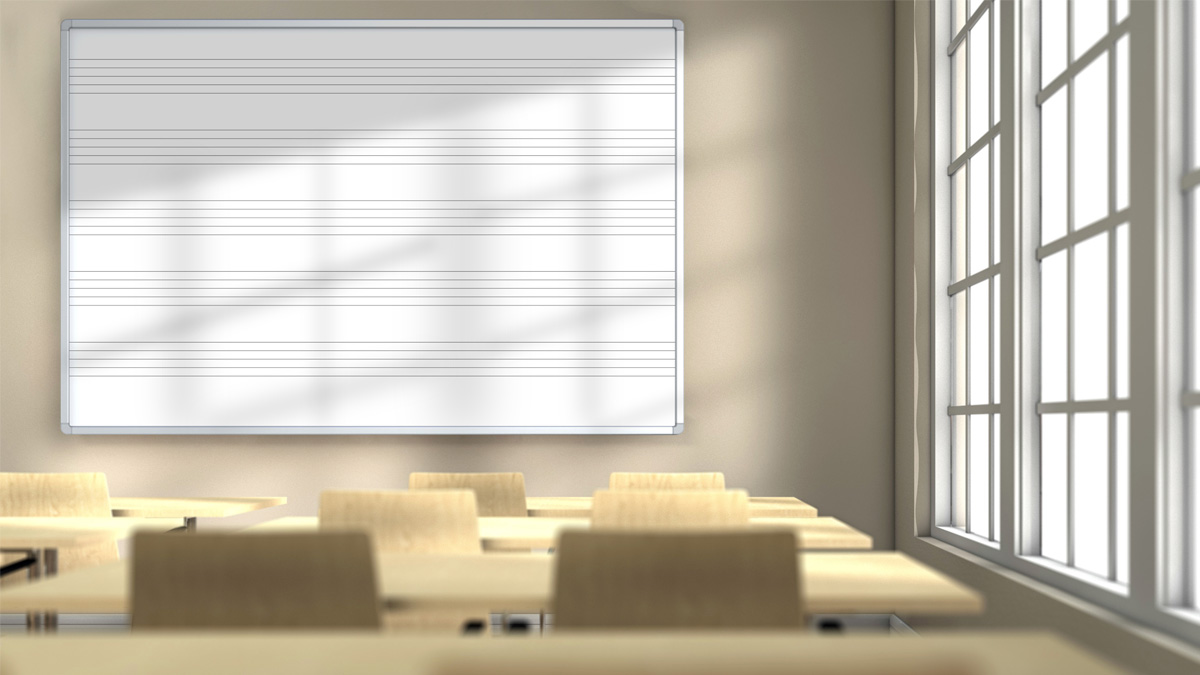Imagine trying to teach or study in a damp, cramped old mobile structure that just doesn’t meet modern classroom standards. For many teachers and students, this is still an everyday experience in overcrowded classrooms.
The increasing pressures of expanding school populations, shifting demographics, and fluctuating enrollment numbers often force school leaders to seek creative, cost-effective solutions to meet student needs. One affordable, flexible solution is temporary school buildings, also known as portable classrooms or modular structures, such as this range of modern modular classrooms. Following are six steps to navigate the challenges of installing and equipping temporary school buildings.

1. Planning for Temporary School Buildings
Effective planning is the foundation for the successful installation of temporary school buildings. With a detailed, strategic approach, schools avoid risking logistical headaches, increased costs, and student dissatisfaction.
-
Assess the Needs
The first step involves thoroughly assessing the school’s current and future needs. Consider how many additional students require accommodation and the types of spaces needed, such as standard classrooms, science labs, or administrative offices. Are specialized areas like art studios, music rooms, or computer labs required? How long will the temporary buildings be used—one academic year, or several? For instance, a school anticipating fluctuating enrollment due to population booms in nearby neighborhoods may plan for modular classrooms to be in place for several years, while a school undergoing construction might need them for a shorter duration.
-
Select a Site
Choosing the right location for temporary buildings is critical. The site should be easily accessible to students and staff, with minimal disruption to the ongoing activities of the main school campus. Ensuring the site has appropriate connections to essential utilities such as electricity, water, and sewage systems is equally important. For example, placing the temporary units too far from restrooms or not close enough to the main building can lead to operational inefficiencies and frustration among students and staff.
-
Compliance with Regulations
Navigating local zoning laws and building codes is essential in any building project, and temporary structures are no exception. Modular units must meet state and local regulations concerning fire safety, structural integrity, and accessibility (such as ADA compliance). Educational standards may also dictate certain specifications, such as classroom size and ventilation requirements. Failing to comply can result in costly delays or fines. Engaging with local building inspectors and legal advisors early in the planning phase can help avoid these pitfalls.

2. Select the Right Temporary Building Solutions
Temporary school buildings come in various forms, from basic portable units to more sophisticated modular systems. Choosing the most appropriate structure depends on several factors, including the school’s budget, the anticipated length of use, and the specific functional requirements of the space.
-
Opt for Modular Solutions
Modular buildings offer significant advantages over traditional portable classrooms. They are highly customizable and can be tailored to fit a school’s specific needs. For example, if science classes require specialized laboratory space, modular buildings can be outfitted with appropriate sinks, gas lines, and other lab necessities. Modular units can also easily be expanded, relocated, or reconfigured to accommodate changing demands. The Hill School in Pennsylvania is a good example of implementing a relocatable modular classroom that now successfully houses the school’s biology, chemistry, and engineering departments.
-
Consider Long-Term Durability
Even though these buildings are labeled “temporary,” they are often used for much longer than initially anticipated, so selecting high-quality, durable materials is crucial. Weather-resistant materials will help extend the life of the building, especially in regions prone to extreme weather conditions. For instance, schools in areas with harsh winters should opt for structures with reinforced roofing and strong insulation to withstand snow accumulation and low temperatures.
-
Incorporate Energy Efficiency
Incorporating energy-efficient solutions is a must for both cost savings and environmental sustainability. Opt for buildings with energy-efficient insulation, high-performance windows, and eco-friendly lighting systems. Choosing HVAC systems with programmable thermostats can significantly reduce energy consumption while ensuring students and staff remain comfortable in hot weather. Schools can explore state and federal incentives for energy-efficient construction, further offsetting initial costs.
3. Economic Outfitting and Equipping of Temporary Buildings
Budget constraints are an ongoing concern for most schools, particularly when outfitting temporary buildings. Careful planning can ensure that these spaces are well-equipped without exceeding budget limitations.
-
Reuse and Repurpose
An effective way to manage a limited budget is by reusing furniture and technology already available within the school. Items from underutilized spaces can be transferred to temporary modular units, reducing the need for new purchases. Older, yet still functional, equipment can also be relocated to these units, so students can access necessary resources without incurring additional expenses.
-
Choose Flexible Furniture
Investing in adaptable furniture can enhance the functionality of temporary classrooms. Versatile pieces, such as desks on wheels, allow for quick reconfiguration to support different teaching methods and activities. This approach maximizes the usability of the space and provides a cost-effective, multipurpose solution for classroom needs.
-
Purchase in Bulk
Substantial savings can be achieved by bulk purchasing essential items. Schools can collaborate with other schools or districts to buy supplies in large quantities, benefiting from discounts and cooperative purchasing agreements. This strategy helps keep costs under control while outfitting temporary classrooms with the necessary furniture and materials.
-
Integrate Technology
In modern educational settings, technology is essential. Schools can cut costs by utilizing cloud-based platforms, which reduce the need for physical infrastructure and textbooks. By opting for digital resources and securing affordable internet solutions, even temporary classrooms can remain well-equipped with the technology required for learning, all while staying within budget.
4. Design a Positive Learning Environment
Temporary classrooms should be just as conducive to learning as permanent ones. Creating an inviting, comfortable, and engaging space is key to maintaining student motivation and academic performance.
-
Adequate Lighting and Ventilation
Natural light improves student concentration and well-being, so maximizing window space or incorporating skylights should be a priority. If natural light is limited, high-quality artificial lighting that mimics daylight is essential. Proper ventilation is also crucial for maintaining air quality and regulating temperature. Installing fans or air filtration systems can boost air circulation, especially in smaller or more crowded classrooms.
-
Noise Control
Temporary buildings often face noise challenges from external sources (such as nearby traffic) and within the building itself. To mitigate this, consider installing soundproofing materials like acoustic ceiling tiles, insulated walls, or carpets that absorb sound. These solutions can help create a quieter, more focused learning environment, allowing students to remain engaged without distractions.
-
Aesthetic Considerations
The appearance of a learning space has a direct impact on student morale and behavior. Simple touches, such as vibrant paint colors, student artwork displays, or even themed bulletin boards, can make a big difference in the overall atmosphere. Involving students in decorating the space can foster a sense of ownership and community.
5. Ongoing Management and Maintenance
Once installed, temporary buildings require routine maintenance to remain safe, functional, and conducive to learning.
-
Arrange for Regular Inspections
Like permanent structures, temporary school buildings should undergo regular inspections to identify wear and tear that could compromise safety or comfort. Common areas to inspect include roofing, plumbing, electrical systems, and HVAC units. Early detection of issues can prevent larger, more expensive problems later.
-
Obtain Maintenance Contracts
Entering into service agreements or maintenance contracts with vendors is a smart way to guarantee that essential systems are regularly serviced. For example, scheduling annual HVAC inspections before the winter season can ensure that heating systems are in working order when needed most.
-
Solicit Community Feedback
Gathering feedback from the people who use these spaces—teachers, students, and parents—provides valuable insights. Are the classrooms comfortable? Is the technology working as expected? This feedback can guide future improvements and highlight issues that may not have been initially apparent.
6. Future-Proofing Temporary Solutions
While these structures are intended to be temporary, there’s always a possibility they will be in use longer than planned. Future-proofing the design and functionality of these buildings can save schools time and money down the road.
-
Scalable Design
When planning for modular units, consider scalability. These buildings should be designed to expand or contract based on fluctuating student populations. If enrollment spikes in the coming years, additional units can be added seamlessly. Conversely, the units should be easily deconstructed or repurposed for alternative uses when the need for space decreases.
-
Potential for Permanent Use
Some modular buildings are so well-constructed that they could transition into permanent structures if needed. Schools facing long-term overcrowding may eventually consider transforming these “temporary” units into lasting fixtures by reinforcing them with permanent foundations or adding architectural enhancements.
Temporary school buildings provide a flexible, cost-effective solution to overcrowding, but their success hinges on thoughtful planning, resourceful outfitting, and proactive maintenance. By following these steps, school leadership and procurement officers can ensure that these spaces meet current needs and positively impact student learning outcomes.
This article is based, in part, on the following resources:
- https://www.modular.org/portable-classroom-construction/
- https://www.modular.org/aod-2024-guide-to-modular-classrooms-everything-you-need-to-know/
- https://www.modulargenius.com/blog/expanding-your-school-with-modular-classrooms-a-step-by-step-guide.html
- https://www.mobilemodular.com/blog/portable-classrooms-common-school-portable-questions
- https://marketscale.com/industries/education-technology/how-temporary-modular-classrooms-help-schools/









